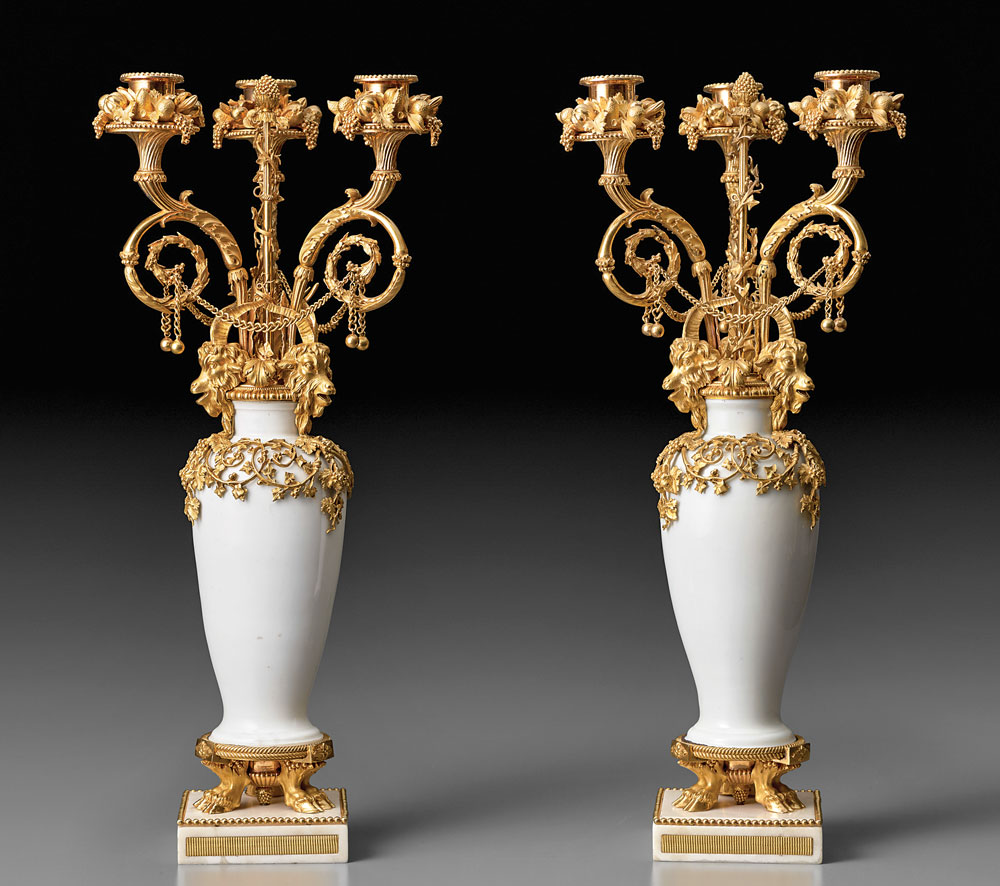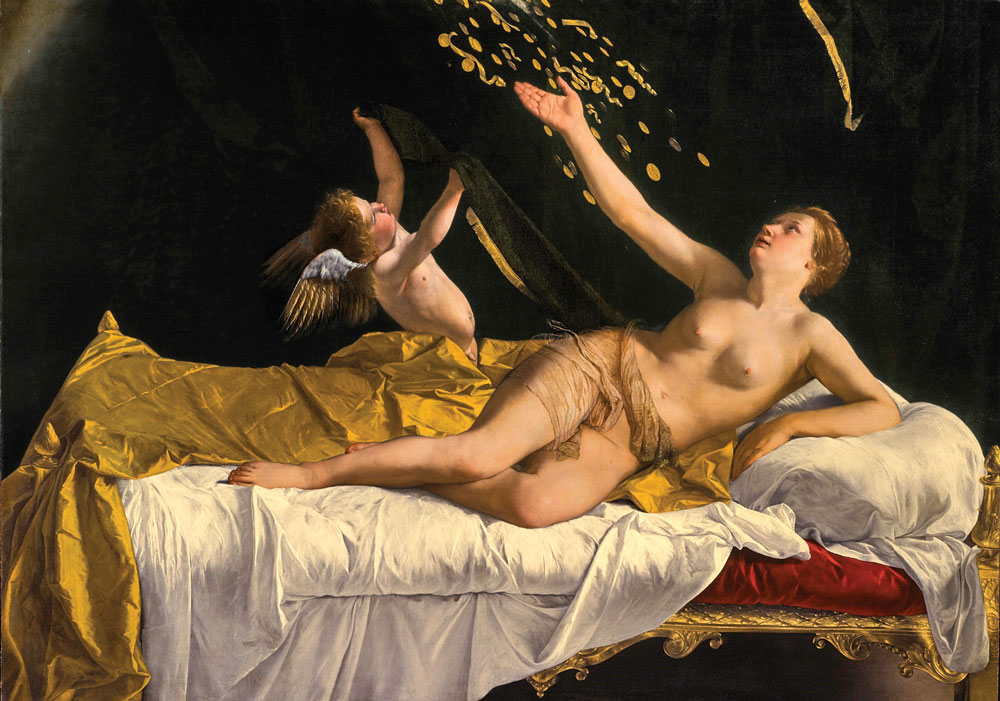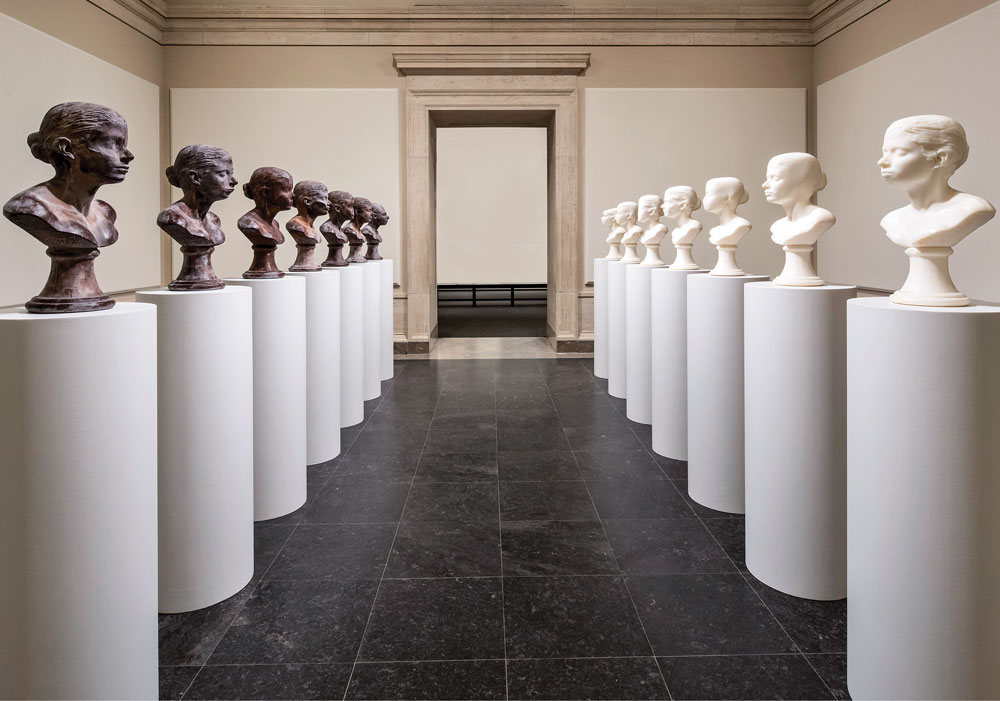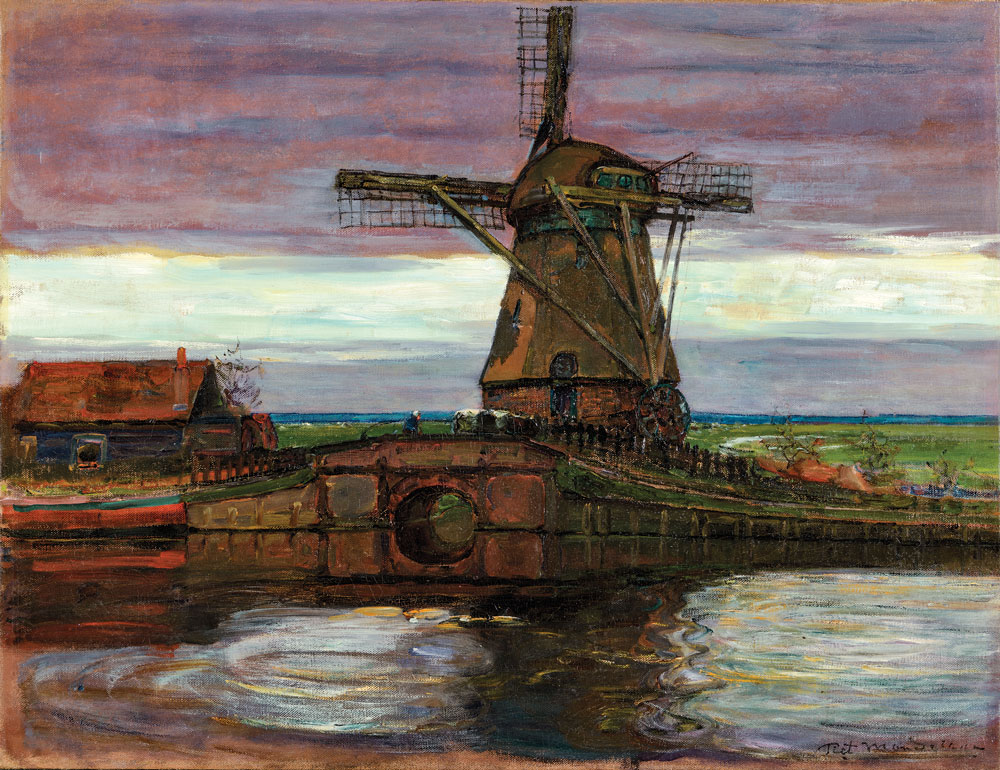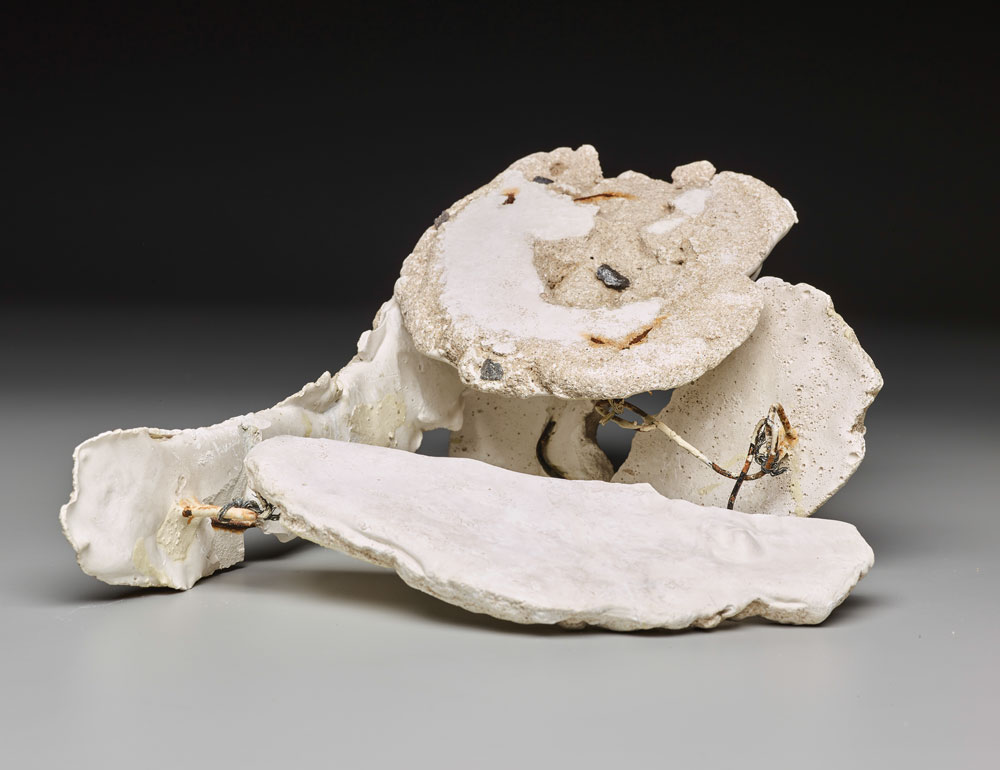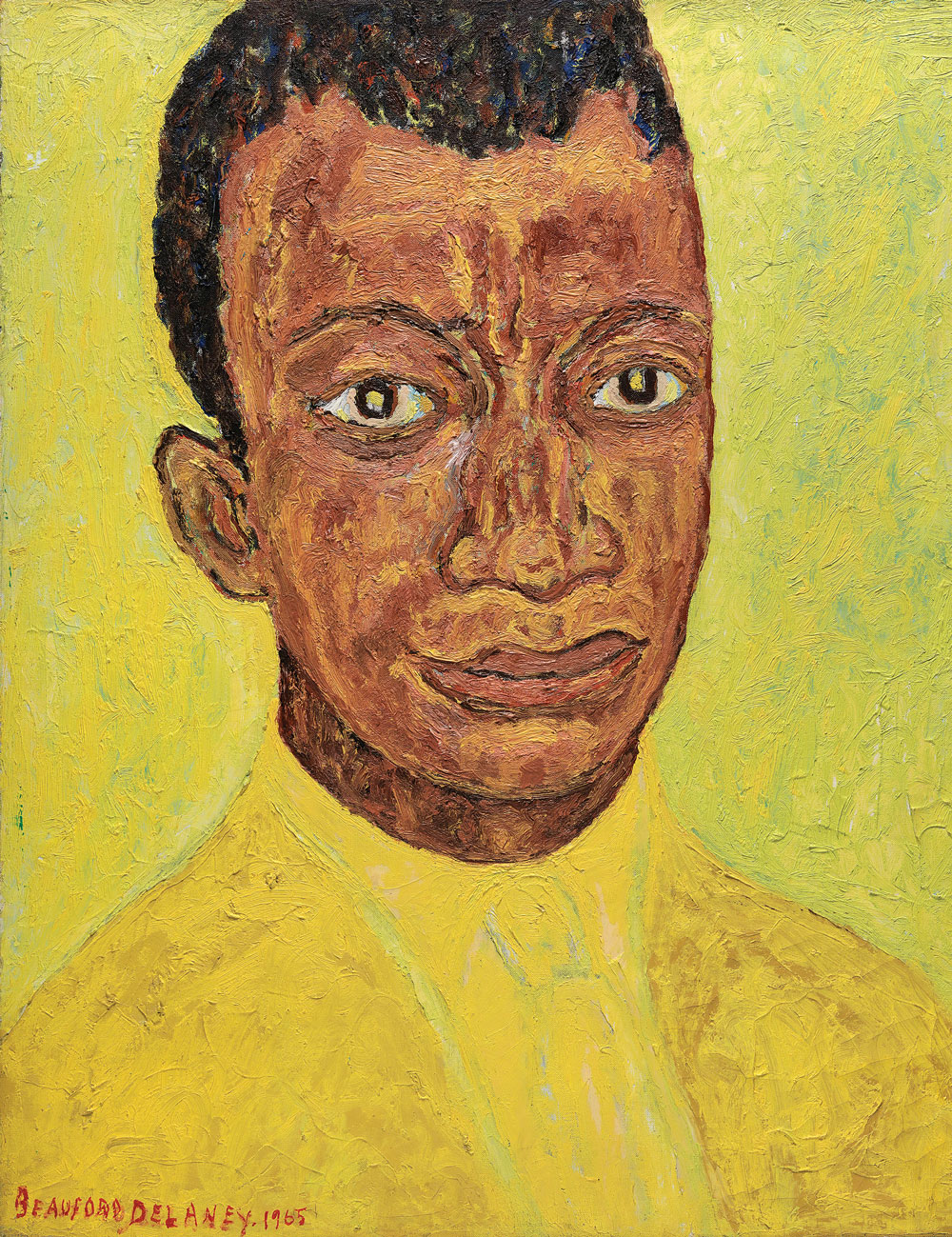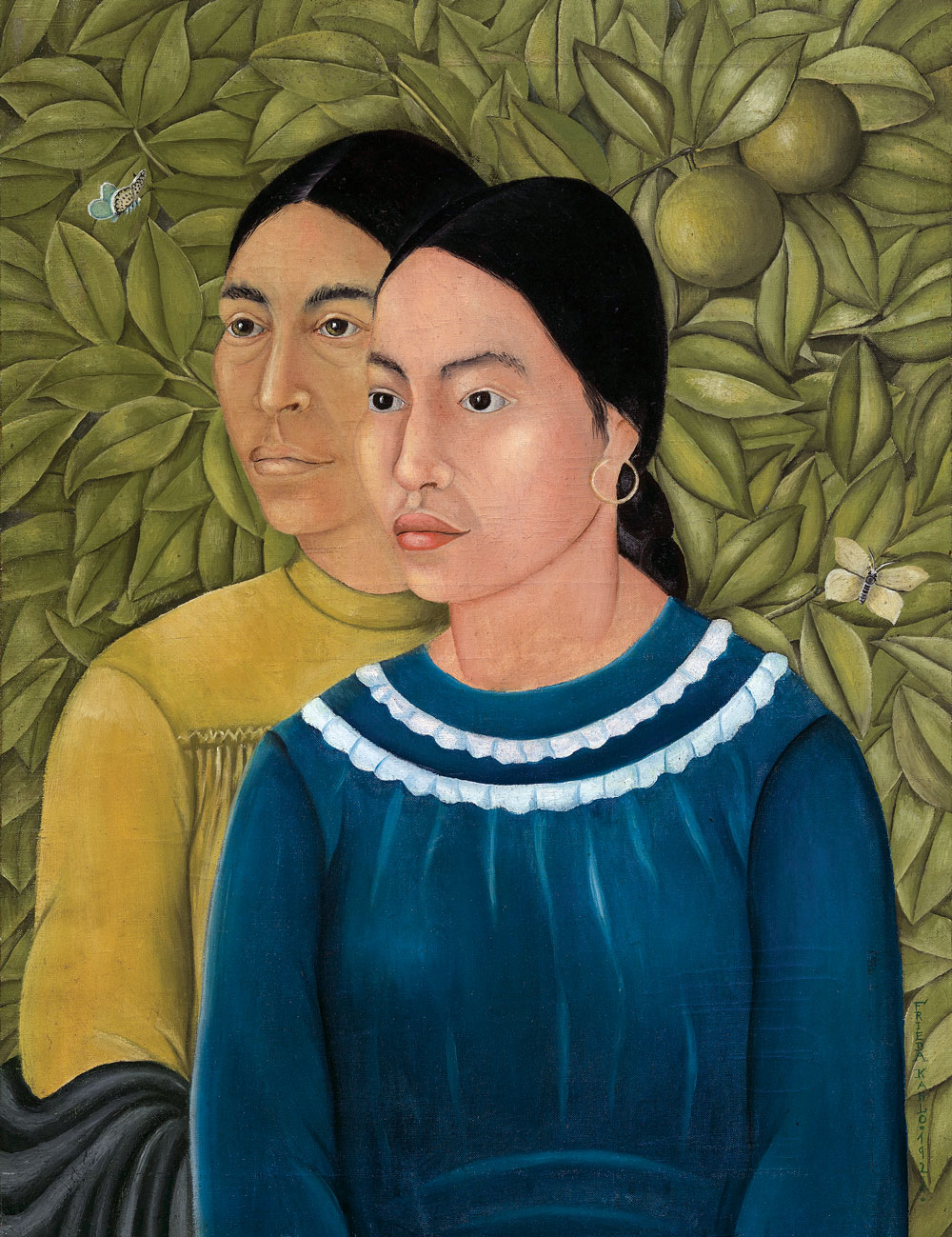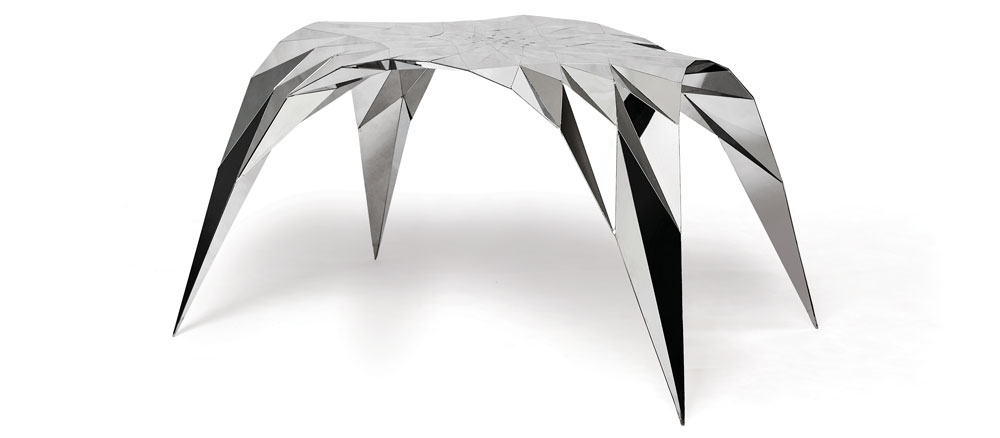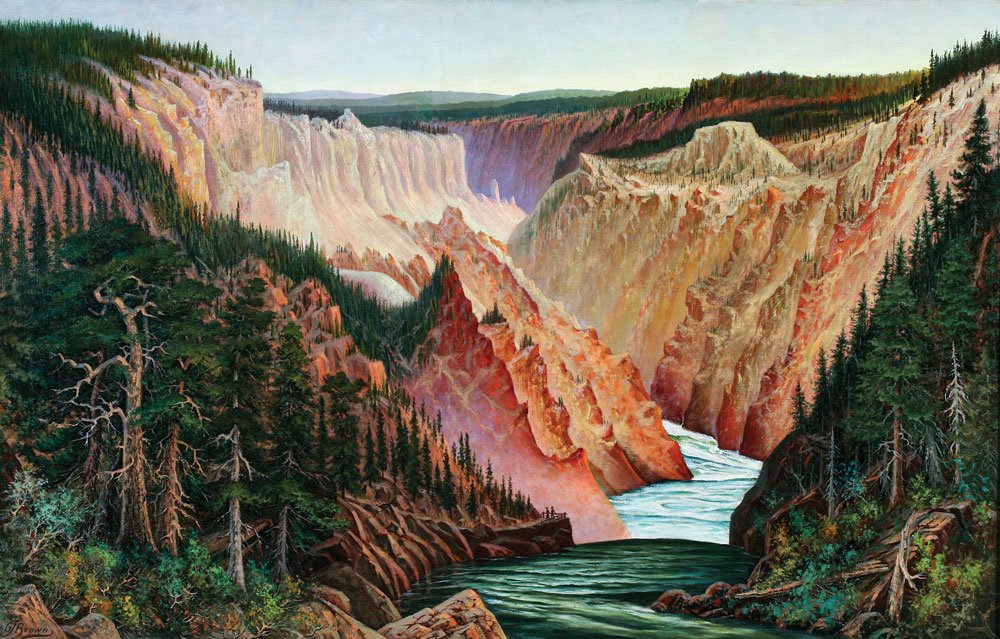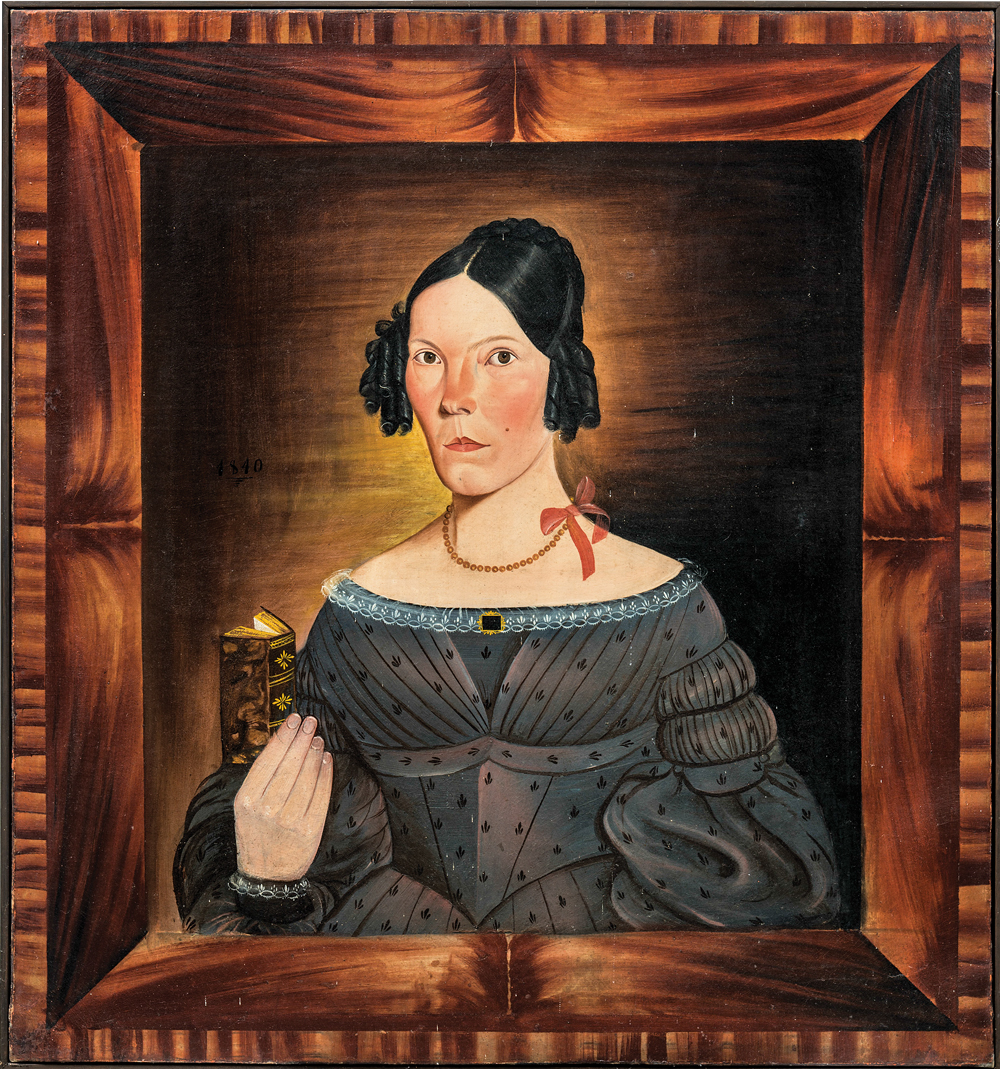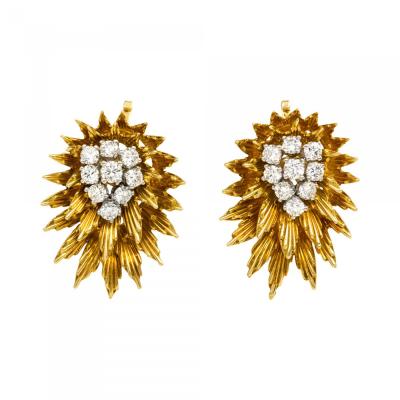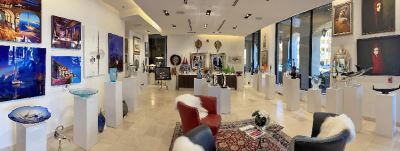Top Museum Acquisitions: 2016 in Review
William S. Burroughs’ quote, “When you stop growing you start dying,” could be the motto of many museums in 2016. Among the museums that have opened new expansions in the past year are the Portland Art Museum in Oregon (the Rothko Pavilion, filled with paintings by Mark Rothko from the collections of his children Christopher Rothko and Kate Rothko Prizel); the Huntington Library, Art Collections, and Botanical Gardens in California (the Virginia Steele Scott Galleries of American Art); the San Francisco Museum of Modern Art (after a three-year closure); the Dallas Museum of Art (the north entrance, renamed Eagle Family Plaza); the Speed Art Museum in Louisville, Kentucky (the new 62,500 square-foot building doubled the museum’s overall square footage); and the Center for Maine Contemporary Art in Rockland (the new building doubles its space to 7,700 square feet). Expansion projects in the works include the Peabody Essex Museum, in Massachusetts; the Seattle Asian Art Museum, in Washington State; the Hood Museum of Art at Dartmouth College; the Museum of Contemporary Art San Diego; the Mildred Lane Kemper Art Museum at Washington University, in St. Louis; the Museum of Fine Arts, Boston (a 22,000 square-foot conservation center), and New York’s Museum of Modern Art.
Some museums have other priorities, such as changing their names. Those who have done so in the past year: the Mystic Museum of Art (formerly the Mystic Art Center), the Buffalo Albright-Knox-Gundlach Art Museum (formerly the Albright-Knox Art Gallery), the Salvador Dali Museum (formerly the Museum of Monterey), and the Institute of Contemporary Art Los Angeles (formerly the Santa Monica Museum of Art). Others have changed addresses or closed. The National Academy Museum in New York put its Fifth Avenue building up for sale, and the Danforth Art Museum moved to another location in Framingham, Massachusetts. The Museum of Contemporary Craft in Portland, Oregon, closed, and its collection was taken over by the Pacific Northwest College of Art; while the incipient George Lucas Museum of Narrative Art, the plans for which did not receive a warm welcome in either San Francisco or Chicago, is trying again in Los Angeles.
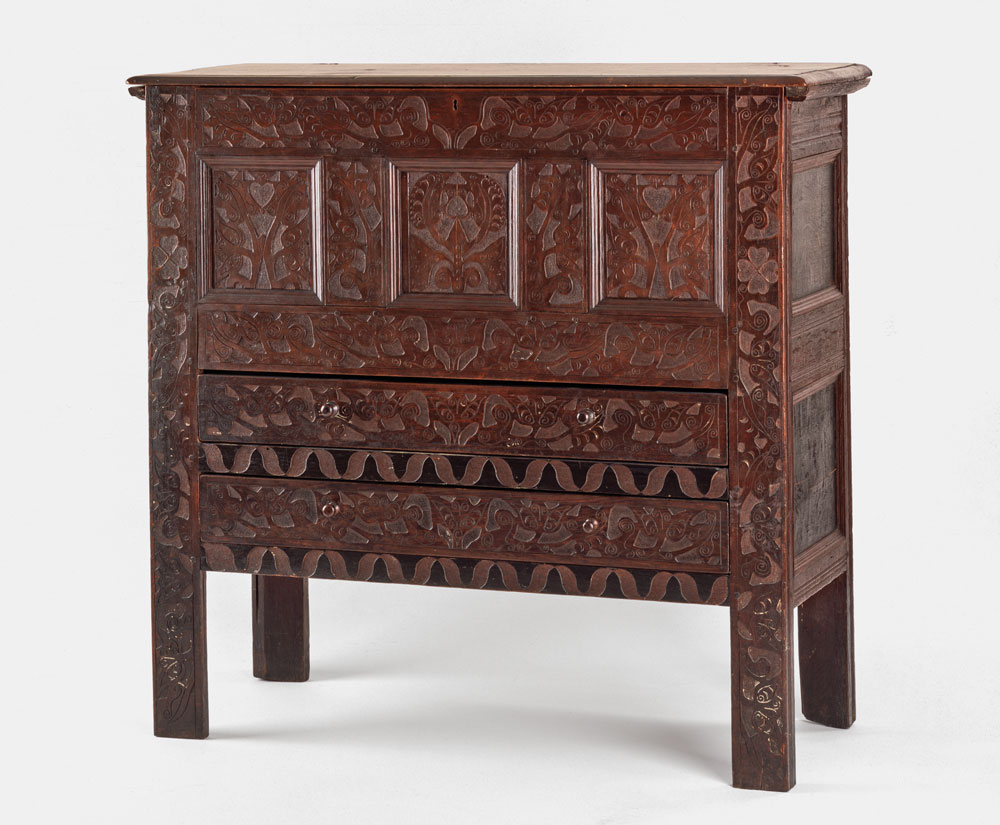
- Fig. 4: Chest with Two Drawers, probably made in Hampshire County, Massachusetts, 1715-1725. Maple, sycamore, red oak, white pine, yellow pine, and beech. 45-3/4 x 48-3/4 x 19 in. 125th Anniversary Acquisition. The Anne H. and Frederick Vogel III Collection for the Philadelphia Museum of Art (2016).
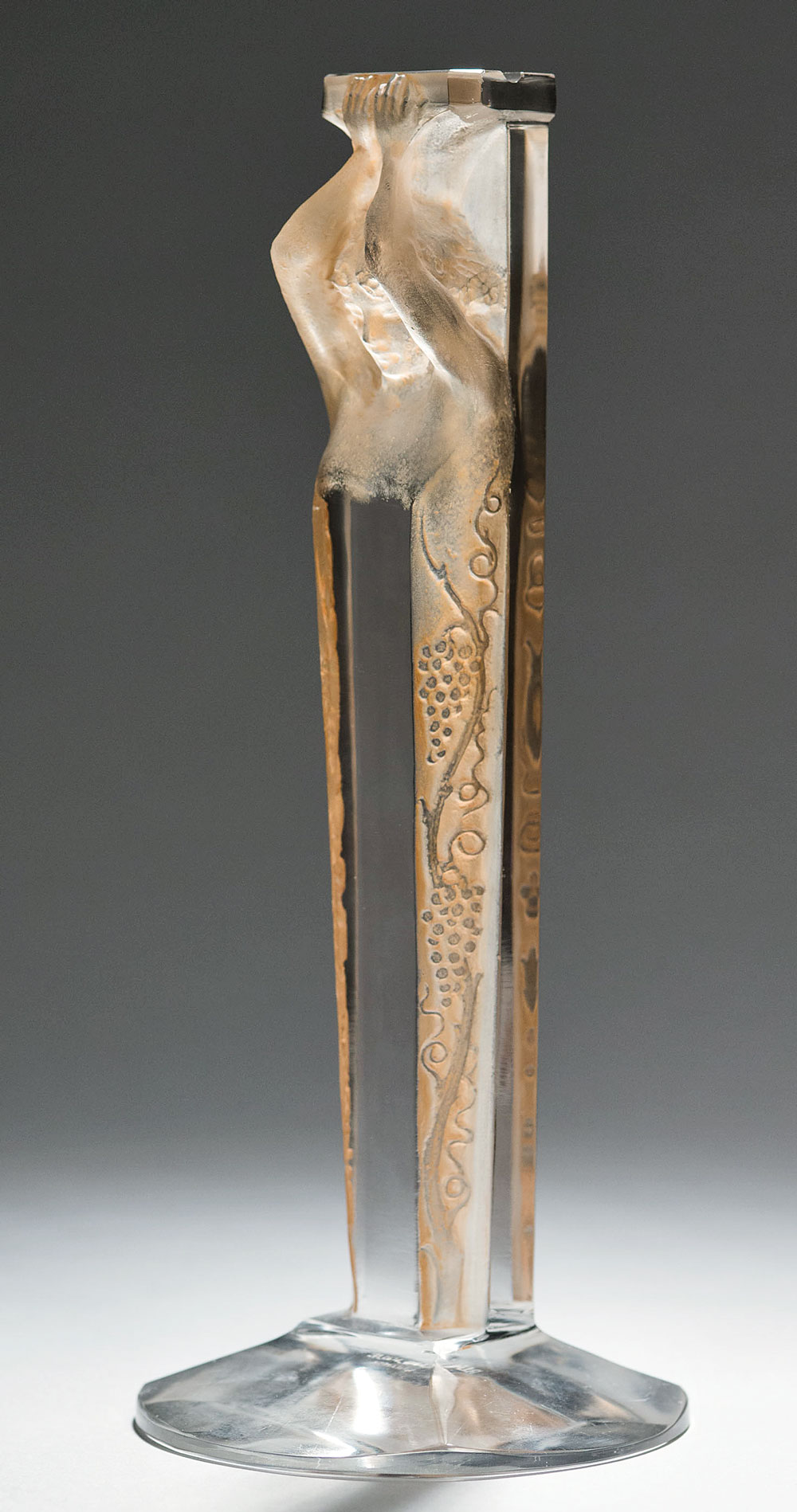
- Fig. 5: Bacchus Figural Centerpiece Support, 1923. René Lalique (French, 1860-1945). Cast and patinated glass; h. 25.5 cm. The Cleveland Museum of Art (2016).
Museums have increasingly continued to strive to attract larger and more diverse audiences and increase accessibility to their collections. One way many institutions are achieving this is through social media, apps, and encouraging the taking of selfies next to artworks. In essence, museums are looking for ways to connect to younger people for whom the cyber world and real life are integrated. In the museum world nowadays, it’s considered a sign of success, rather than of skewed values, to see millennials in a painting-filled gallery staring into their phones, obtaining information about objects and conveying their opinions about them. “Increasingly, people…want the participatory, interdisciplinary experience. Younger philanthropists also are demanding that kind of experience,” said Salvador Acevedo, of museum-consulting firm Scansion. Translating technology into financial stability remains a challenge, though, especially as technology is always a catch-up game. “It still is to be seen how museums can monetize this.” Zannie Voss, director of the National Center for Arts Research at Southern Methodist University in Dallas, Texas, agrees, noting, “Museums are in a period of transition . . . and are spending more on marketing dollars and attracting more people through new educational, digital, and other programming while garnering less revenue per person who attends.” Time will tell as to whether this approach proves successful, but many museums are embracing the change and are betting on future rewards.
NEW ACQUISITIONS
Looking around the country, many museums have acquired new objects for their permanent collections, appealing to traditional audiences as well as to a younger crowd.
A gift to New York’s Museum of Modern Art of 102 Latin American paintings and sculptures from the collection of museum trustee Patricia Phelps de Cisneros will increase the Modern’s holdings in Latin American art by fifty percent, as well as lead to the establishment of a Cisneros Institute that will research and host annual international conferences on the art of Latin America.
The Frick Collection in Manhattan was gifted fourteen porcelain objects—dating from 1720 to 1740—produced by the Du Paquier factory in Vienna, Austria, from Paul Sullivan and museum trustee Melinda Martin Sullivan, which increases the museum’s significant porcelain collection. The Frick also acquired a magnificent pair of candelabra by Pierre Gouthiére (1732–1813), one of the greatest French artists of the eighteenth century (Fig. 1). Gouthiére was a master chaser-gilder who created opulent objets d’art coveted by the wealthiest and most important figures of pre-revolutionary France, including Louis XVI, Marie Antoinette, Louis XV’s mistress Madame Du Barry, and the Duke of Aumont. The candelabra are included in the first ever exhibition exclusively of his work, Pierre Gouthiére: Virtuoso Gilder at the French Court, highlighting twenty-one of his finest masterpieces; on view through February 19, 2017.
The J. Paul Getty Museum in Los Angeles purchased for $30.5 million at Sotheby’s Orazio Gentileschi’s 1621 painting Danae (Fig. 2), which recalls the ancient Greek myth of the daughter of King Acrisius of Argo who is hidden away by her father in a secret chamber to keep away potential suitors who might impregnate her, fulfilling the Oracle of Delphi’s prediction that she would be murdered by her son. The sale price exceeded by seven times the previous auction record for the artist’s work. Among the Getty’s other acquisitions in 2016 were a twenty-seven-inch high ca. 720–700 B.C. Greek amphora; a late second-century A.D. Roman marble head; and a collection of eighteenth-century decorative arts (purchased from economist Horace Wood Brock) that includes seven clocks, a pair of candelabra in gilt bronze, two sets of vases, a porcelain inkstand, and a carved giltwood console table.
The Los Angeles County Museum of Art has become one of the most active in acquiring postwar and contemporary art, and 2016 was no exception. Entering its permanent collection was a 1970 Claes Oldenburg soft sculpture Typewriter Eraser (purchase of the museum’s Collectors Committee); thirty-nine prints produced at Gemini G.E.L. studio by such artists as Roy Lichtenstein, Claes Oldenburg, Robert Rauschenberg, John Baldessari, Ed Ruscha, and Frank Stella (gift of Gemini co-founder Sidney Felsen and his wife, Joni Weyl, along with Roy Lichtenstein’s widow, Dorothy Lichtenstein); and the 1963 John Lautner-designed Beverly Hills house (gift of James F. Goldstein) that played a role in the 1998 Coen brothers’ film The Big Lebowski.
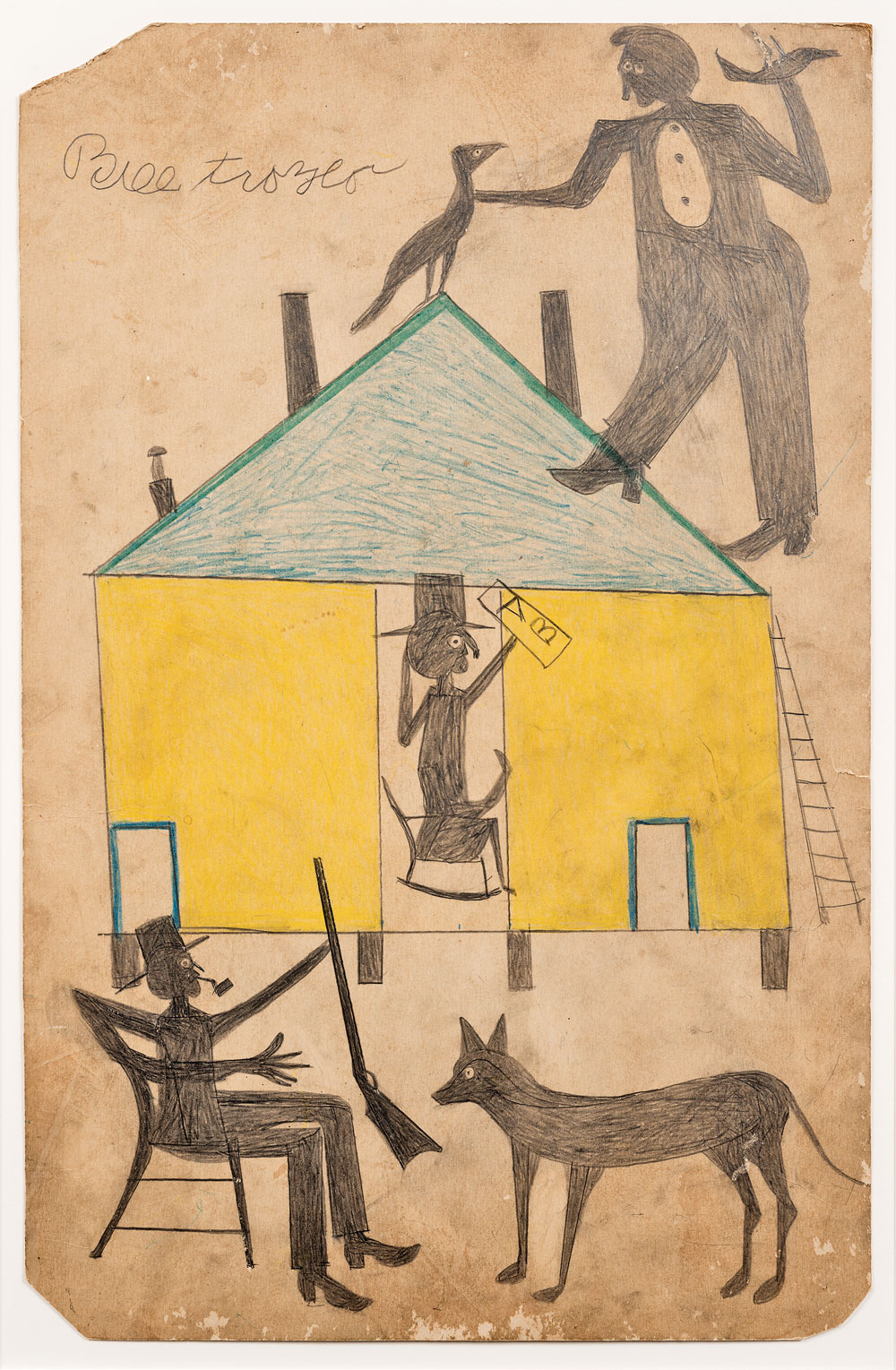
- Fig. 10: Bill Traylor, Untitled (Yellow and Blue House with Figures and Dog), about 1939–1942. Colored pencil on cardboard. Smithsonian American Art Museum; Museum purchase through the Luisita L. and Franz H. Denghausen Endowment. Image courtesy of Judy A. Saslow. Smithsonian American Art Museum (2016).
Among the artworks acquired by the National Gallery of Art in Washington, D.C. were the contemporary masterpiece Lick and Lather (Fig. 3) by Janine Antoni, arguably her most famous work; Alex Katz’s 1959 painting Portrait of Ada, his wife; an artist book that was a 1947 collaboration between artist Joan Miró and surrealist poet Paul Éluard, consisting of eighty woodcut color prints, titled À toute épreuve (purchased with several funds); a 1973–1974 collage by Jim Dine, Shellac Orientale (donated by Milly and Arne Glimcher); and a large-scale 1972 mezzotint by Chuck Close titled Keith (gift of Dorothy and Herbert Vogel).
The Cy Twombly Foundation donated to the Philadelphia Museum of Art five bronze sculptures by the artist, and art collector Daniel W. Dietrich II bequeathed more than fifty works of art, including two large-scale paintings by Cy Twombly, Untitled (Roma) (1961), and Untitled (Bolsena) (1969), as well as two monumental canvases by Philip Guston, The Night (1977) and Kettle (1978), four paintings created in 1965 by Agnes Martin, and Edward Hopper’s 1962 painting Road and Trees. Early Pennsylvania furniture is one of the strengths of the Philadelphia Museum of Art’s collection, but other regions have been less well represented. In 2016, nine exceptional pieces of early Massachusetts (Fig. 4), New York, and Pennsylvania furniture were given by Anne and Frederick Vogel III of Milwaukee; the objects join nine objects previously-donated from the Vogels’ collection to create a richer presentation of regional diversity in late seventeenth and early eighteenth-century American woodworking. The Museum has also acquired an impressive group of modern and contemporary studio ceramics, glass, furniture, fiber, and jewelry.
The Cleveland Museum of Art has added to its collection of works by glass artist René Lalique through the purchase of a 1923 Bacchus (Fig. 5), created as part of a group to adorn the table of the president of France in the Elysée Palace in Paris, it was shown only once to the public in the Salon d’Automne of 1923. Additional acquisitions include a Japanese lacquer writing box, circa 1573–1599, that has a design of a phoenix in a tree on the bank of a flowing river on the exterior, and chrysanthemum flowers and grasses under a silver autumn moon on its interior.
The Nelson-Atkins Museum of Art in Kansas City, Missouri, was given twenty-nine Impressionist and Postimpressionist paintings that comprise the Marion and Henry Bloch Collection, to be housed in a renovated area of the museum (funded by the Marion and Henry Bloch Family Foundation) that will open in early 2017. In appreciation, the museum acquired Piet Mondrian’s Stammer Mill with Streaked Sky (Fig. 6) in honor of Henry W. Bloch, chair emeritus of the board of trustees. The painting will join the gift of the Marion and Henry Bloch Collection in the newly designed Bloch Galleries.
Jackson Pollock created six sculptures during his lifetime, and one of them—an untitled sand-cast with plaster, gauze, and wire piece from 1956—exhibited most recently at Manhattan’s Matthew Marks gallery in 2012, was purchased by the Dallas Museum of Art from the Tony Smith Estate through the support of the Gayle and Paul Stoffel Fund for Contemporary Art Acquisition (Fig. 7). If Jackson Pollock’s sculptures are not all that well known, the same could be said about his drawings. Perhaps rectifying that is the gift of nine Pollock drawings to Houston’s Menil Collection. The earliest of these drawings date from 1939 and the last from 1951, and they trace his development from Surrealism into what would become Abstract Expressionism. The gift of the Pollocks, from Menil trustees Janie C. Lee and Louisa Stude Sarofim, is part of a donation of fifty-five drawings that includes works by Helen Frankenthaler, Arshile Gorky, Philip Guston, Eva Hesse, Franz Kline, Lee Krasner, Brice Marden, Robert Motherwell, Barnett Newman, and Richard Serra.
Jorge M. Perez, for whom the Miami Art Museum was renamed the Perez Art Museum in 2013 following his gifts of art and cash to the museum, continues to be generous to the institution. In 2016, he pledged a donation of another $15 million over the next ten years, half of which will be used for the purchase of works by Latin- American artists, and the other $5 million to strengthen the museum’s acquisitions endowment. He has also pledged over two hundred works by Cuban artists from his own collection.
Realizing that they have a lot of catching up to do, museums around the country have been hunting for works by Latin American, Asian, African-American, and women artists. The Chrysler Museum of Art in Norfolk, Virginia, has purchased a 1965 oil portrait of African-American writer James Baldwin by African-American Harlem Renaissance artist painter Beauford Delaney (Fig. 8). Born in Knoxville, Tennessee, Delaney has ties to Virginia through both his mother and father. This marks the Chrysler’s first purchase of work by a deceased African American artist, part of a continued effort to exhibit more art reflective of the sizable African American population in Hampton Roads.
The first painting Mexican artist Frida Kahlo ever sold, her 1928 Dos Mujeres (Salvadora y Herminia), was purchased early in 2016 by the Museum of Fine Arts, Boston, and immediately put on public display (Fig. 9). The two women depicted worked as maids in the artist’s mother’s house but, in keeping with Kahlo’s left-wing political sympathies, they are not shown wearing aprons or at work but side by side in front of tropical foliage.
The Smithsonian American Art Museum announced the acquisition of six masterpieces by the self-taught American artist Bill Traylor. Each represents key themes and characters that recur in Traylor’s brief but prolific artistic career. The group, from the collection of Judy Saslow in Chicago, includes the early Untitled (Yellow and Blue House with Figures and Dog) (Fig. 10) and Untitled (Dog Fight with Writing) from about 1939–40 and Traylor’s largest extant painting, Untitled (Radio) from about 1942. The group is valued at more than $1 million. The addition of six of Traylor’s works to the collection doubles the museum’s holdings by this artist. This combination purchase and gift from the Saslow Collection is the museum’s most significant acquisition of folk and self-taught art since 1986, when more than 500 works from the Herbert Waide Hemphill Jr. collection became the cornerstone of the museum’s holdings in this area.
Two tables acquired by the High Museum of Art in Atlanta include variations on a theme: a Federal mahogany card table made in Baltimore between 1795 and 1810, and a stainless steel architectural table by Chinese designer Zhang Zhoujie (Fig. 11). To make his 2013 table, Zhang used a digitized fabrication system to laser cut segments of stainless steel that he then welded and meticulously finished by hand. The High’s first contemporary Chinese design acquisition, this artwork strengthens the Museum’s impressive contemporary international design collection.
A rare landscape by artist Grafton Tylor Brown (1841–1918), one of the few nineteenth-century African-American artists to work in the landscape genre and whose works are highly sought by museums, entered the collection of the Tacoma Art Museum (Fig. 12). The stunning scene depicts the Grand Canyon and Yellowstone River. The painting arrived in time to celebrate the 100th anniversary of the National Park Service, and is a fitting tribute to this American institution.
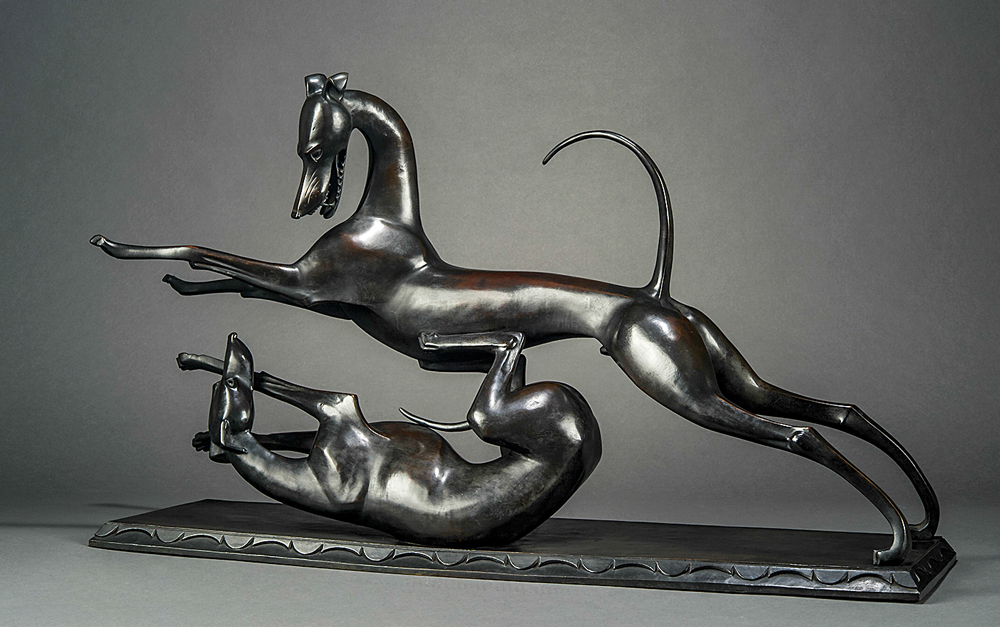
- William Hunt Diederich (American, b. Hungary, 1884–1953), Greyhounds, 1913–16, cast ca. 1920. Bronze, 20-7/8 x 37-1/2 x 11 in. Milwaukee Art Museum; Purchase, with funds in memory of Betty Croasdaile and John E. Julien, and gift of Dr. Milton D. Ratner, Teddy Brunius, Dorothy and Sidney Kohl in memory of John Lloyd Taylor, and various donors, by exchange (M2016.24). The acquisition of Diederich’s Greyhounds marks a significant step in the Milwaukee Art Museum’s efforts to build its 19th- and 20th-century sculpture collection.
Among the acquisitions at the American Folk Art Museum were two 1840 companion paintings by Sheldon Peck (1797–1868) painted while he was in Illinois: Abigail Munro Bosworth (Fig. 13) and Increase Child Bosworth. Other portraits include the 1806 Portrait of a Woman (possibly Abigail Dewey) by James Brown of Massachusetts. The museum continues to expand its collection of contemporary material, including a 2004 collage, Pickman’s Mephitic Models by Paul Laffoley (1935–2016), and a double-sided 1999 work of ballpoint pen on paper with Scotch tape by New York artist Melvin Way (b. 1954).
-----
Daniel Grant is a freelance writer specializing in the arts industry.
Click the following links to read about museum acquisitions from 2015, 2014, 2013, and 2012.
This article was originally published in the 2017 Anniversary/Spring issue of Antiques & Fine Art magazine, a fully digitized version of which is available at afamag.com. AFA is affiliated with Incollect.















